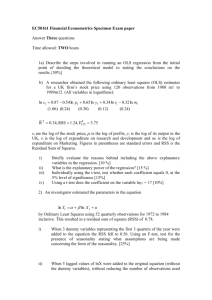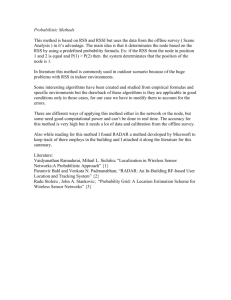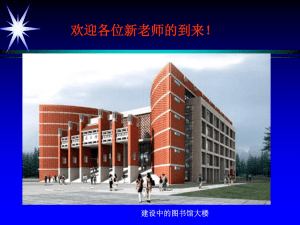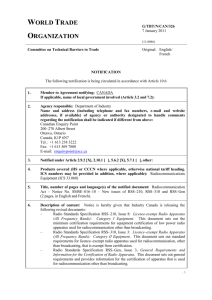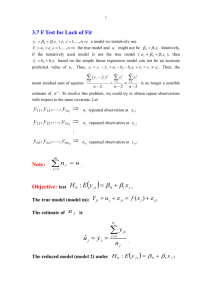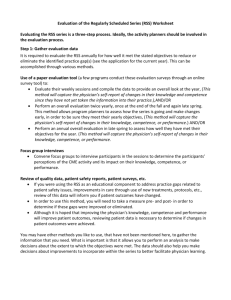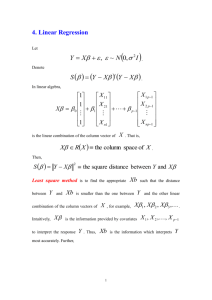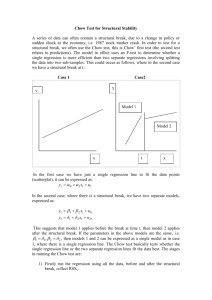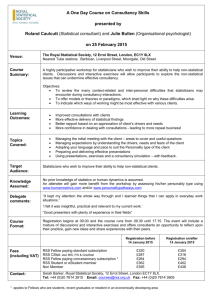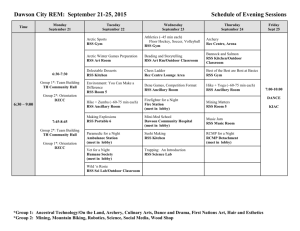F-test of a linear restriction
advertisement
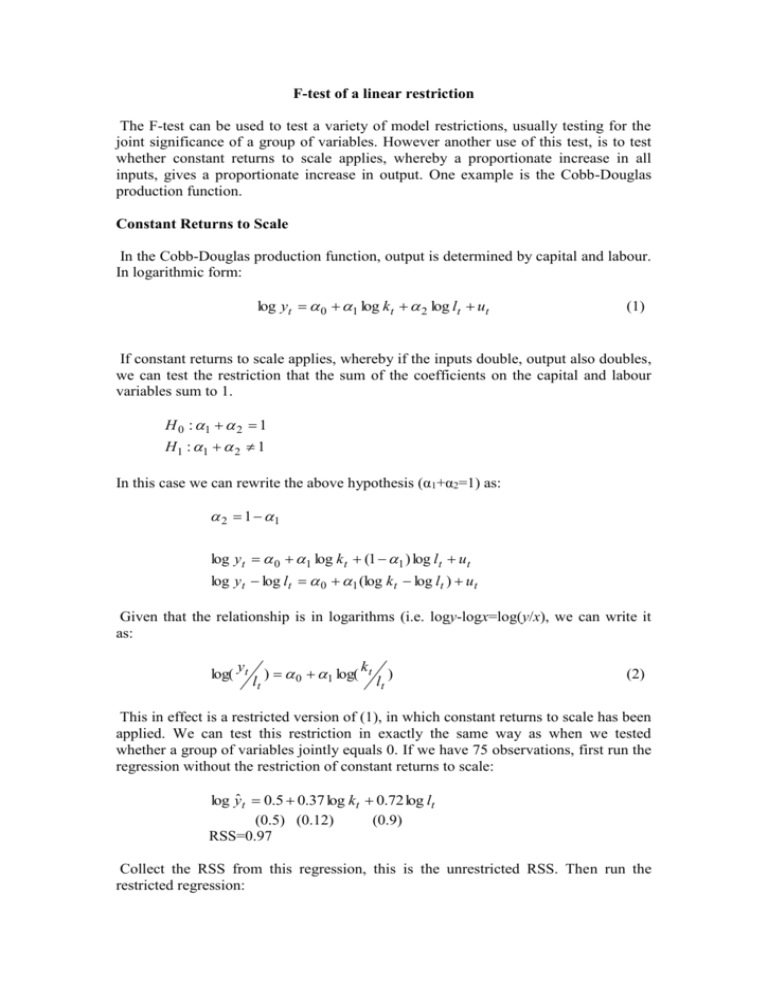
F-test of a linear restriction The F-test can be used to test a variety of model restrictions, usually testing for the joint significance of a group of variables. However another use of this test, is to test whether constant returns to scale applies, whereby a proportionate increase in all inputs, gives a proportionate increase in output. One example is the Cobb-Douglas production function. Constant Returns to Scale In the Cobb-Douglas production function, output is determined by capital and labour. In logarithmic form: log yt 0 1 log kt 2 log lt ut (1) If constant returns to scale applies, whereby if the inputs double, output also doubles, we can test the restriction that the sum of the coefficients on the capital and labour variables sum to 1. H 0 : 1 2 1 H 1 : 1 2 1 In this case we can rewrite the above hypothesis (α1+α2=1) as: 2 1 1 log yt 0 1 log k t (1 1 ) log lt ut log yt log lt 0 1 (log k t log lt ) ut Given that the relationship is in logarithms (i.e. logy-logx=log(y/x), we can write it as: log( yt lt ) 0 1 log( kt lt ) (2) This in effect is a restricted version of (1), in which constant returns to scale has been applied. We can test this restriction in exactly the same way as when we tested whether a group of variables jointly equals 0. If we have 75 observations, first run the regression without the restriction of constant returns to scale: log yˆ t 0.5 0.37 log kt 0.72 log lt (0.5) (0.12) (0.9) RSS=0.97 Collect the RSS from this regression, this is the unrestricted RSS. Then run the restricted regression: log( yˆ t k ) 0.30 0.32 log( t ) lt lt (0.10) (0.80) RSS 1.12 Collect the RSS from this model and put it in the F-test formula of a restriction (m is 1 in this case, as there is only 1 restriction). F RSS R RSS u / m 1.12 0.97 / 1 0.15 11.1 RSS u / n k 0.97 / 75 3 0.0135 1 F72 4.00(5%) As 11.1> 4, we reject the null hypothesis of constant returns to scale (α1+α2=1) and suggest that the unrestricted model is best.
